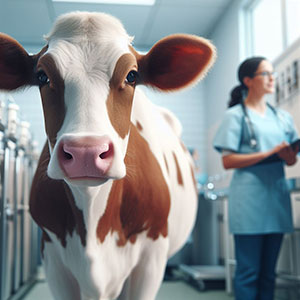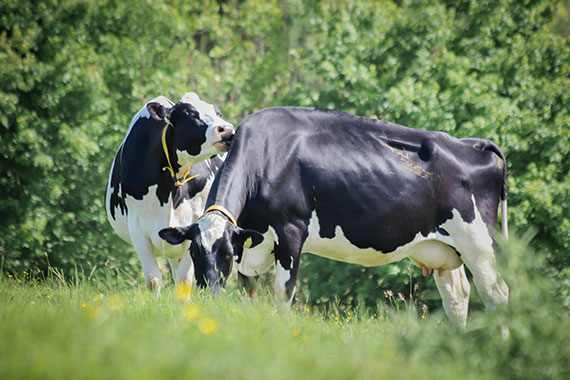The Role of LYSOTECT
Introduction
In modern dairy production, maximizing milk yield and quality is a top priority for farmers and nutritionists. Among the key nutritional strategies to achieve this goal is ensuring a balanced supply of essential amino acids, particularly lysine. Unfortunately, conventional protein sources in cattle diets often fail to provide sufficient levels of this critical amino acid in a form that reaches the small intestine. This is where rumen-protected lysine (RPL) becomes essential.
Our innovative product, LYSOTECT, is designed to deliver lysine efficiently beyond the rumen, ensuring that dairy cows can absorb and utilize it effectively. This article explores how rumen-protected lysine improves milk protein, why it is necessary for dairy cows, and how LYSOTECT supports sustainable and profitable milk production.
What is Rumen Protected Lysine
Lysine is an essential amino acid and one of the most limiting nutrients in high-producing dairy cows. While rumen microbes can synthesize microbial protein, it does not always meet the cow’s lysine requirements, especially during peak lactation. Conventional lysine supplements are degraded in the rumen before they can be absorbed in the small intestine, making them inefficient.
Rumen-protected lysine (RPL) overcomes this challenge. It is coated or encapsulated with specialized materials such as fat, polymers, or carbohydrates that resist ruminal degradation. This protective layer ensures that lysine passes through the rumen intact and is released for absorption in the small intestine.
LYSOTECT utilizes advanced protection technology, providing a consistent supply of lysine that enhances milk protein synthesis and overall productivity.
Why is Lysine Important in Dairy Cow Nutrition?
Lysine plays several crucial roles in dairy cattle nutrition:
- Milk Protein Synthesis – Lysine is directly involved in the synthesis of casein and other milk proteins, influencing milk quality and value.
- Amino Acid Balance – Adequate lysine complements methionine, another limiting amino acid, ensuring optimal protein metabolism.
- Growth and Tissue Development – Lysine supports muscle development, reproductive function, and overall growth in cattle.
- Nitrogen Efficiency – Supplying sufficient lysine helps maximize nitrogen utilization, reducing waste and environmental impact.
Without adequate lysine, dairy cows cannot reach their genetic potential for milk production, and farmers risk losing profitability.
How LYSOTECT Improves Milk Protein
- Direct Contribution to Milk Protein Content
Milk protein is one of the most valuable components of milk, influencing pricing and processing quality. Supplementing
diets with LYSOTECT provides a rumen-stable source of lysine that reaches the small intestine, where it is absorbed and utilized for protein synthesis. Studies consistently show that RPL supplementation leads to higher milk protein percentages and improved milk quality.
- Balancing Amino Acids for Optimal Metabolism
Dairy cow performance depends on balancing essential amino acids. Lysine and methionine are often the first limiting amino acids in dairy diets. Supplementing with LYSOTECT ensures a better amino acid profile, enhancing protein utilization and reducing excess nitrogen excretion.
- Supporting High-Producing Dairy Cows
High-yielding dairy cows have significantly greater protein demands. By providing a reliable source of lysine, LYSOTECT enables cows to maintain milk yield and composition during periods of peak lactation.
- Enhancing Fertility and Health
Lysine plays a role in reproductive efficiency and immune function. Improved protein nutrition through LYSOTECT contributes to better fertility, stronger immune response, and reduced metabolic stress.
- Economic Returns
Milk pricing often rewards higher protein content. By increasing milk protein percentage, LYSOTECT supplementation leads to direct financial benefits for dairy farmers through better milk value.
Applications of LYSOTECT in Dairy Diets
High-Producing Dairy Herds
Cows producing large volumes of milk require balanced amino acid nutrition. LYSOTECT ensures that lysine is not a limiting factor, supporting consistent milk protein synthesis.

Transition Cows
During the transition period, nutrient demands are high, and cows are prone to metabolic disorders. Supplementing with LYSOTECT supports protein metabolism, liver function, and reproductive performance.
Young Heifers and Growing Stock
While RPL is mainly targeted at lactating cows, young heifers also benefit from improved amino acid nutrition for muscle growth and development when balanced correctly.
How Does LYSOTECT Work?
The unique protective coating of LYSOTECT is engineered to resist rumen degradation and release lysine in the small intestine. Key features include:
- Protective Matrix – Coating with fat and carbohydrate blends ensures gradual release beyond the rumen.
- High Bioavailability – Maximum absorption in the small intestine supports efficient protein synthesis.
- Rumen Safety – Reduced risk of nitrogen imbalance compared to unprotected lysine sources.
Recommended Feeding Rates
- Lactating dairy cows: 40–60 g per cow per day, depending on diet formulation and production level.
- Important: Always introduce gradually and ensure proper balance with methionine and other amino acids.
Consult a qualified nutritionist to optimize inclusion rates of LYSOTECT in your herd’s feeding program.
Why Choose LYSOTECT Over Conventional Lysine?
Conventional lysine supplements are almost completely degraded in the rumen, leaving little to no lysine available for absorption in the small intestine. LYSOTECT, on the other hand, provides:
- Higher bioavailability
- Improved milk protein synthesis
- Greater nitrogen efficiency
- Positive economic returns
This makes LYSOTECT a superior choice for modern dairy operations.
Frequently Asked Questions (FAQ)
What makes LYSOTECT different from regular lysine supplements?
LYSOTECT is protected against rumen degradation, ensuring that lysine passes to the small intestine where it can be absorbed and utilized for milk protein synthesis.
Does LYSOTECT improve milk protein percentage?
Yes. By supplying bioavailable lysine, LYSOTECT significantly increases milk protein percentage and overall milk quality.
Can I use LYSOTECT with rumen-protected methionine?
Absolutely. Lysine and methionine are complementary limiting amino acids in dairy cows. Using them together enhances milk protein synthesis and overall productivity.
How quickly will I see results from using LYSOTECT?
Farmers typically observe improvements in milk protein within a few weeks of consistent supplementation, depending on diet and herd management.
Is LYSOTECT safe for all cows?
Yes, when fed according to recommendations. Over-supplementation should be avoided, and diets should be balanced with other amino acids and nutrients.
Does LYSOTECT reduce feed costs?
Yes. While RPL is an investment, it reduces reliance on expensive protein meals and improves nitrogen efficiency, leading to better returns and reduced feed costs over time.
How does LYSOTECT contribute to sustainability?
By improving nitrogen utilization and reducing nitrogen waste, LYSOTECT supports environmentally sustainable dairy farming.
Conclusion
Rumen-protected lysine is an essential tool in modern dairy nutrition. By ensuring that lysine reaches the small intestine intact, LYSOTECT supports higher milk protein, improved fertility, and better nitrogen efficiency.
For farmers aiming to maximize milk value, improve herd health, and enhance sustainability, LYSOTECT is a proven solution. Incorporating it into balanced dairy rations is a cost-effective and science-based approach improving milk protein and overall productivity.
Useful content:


